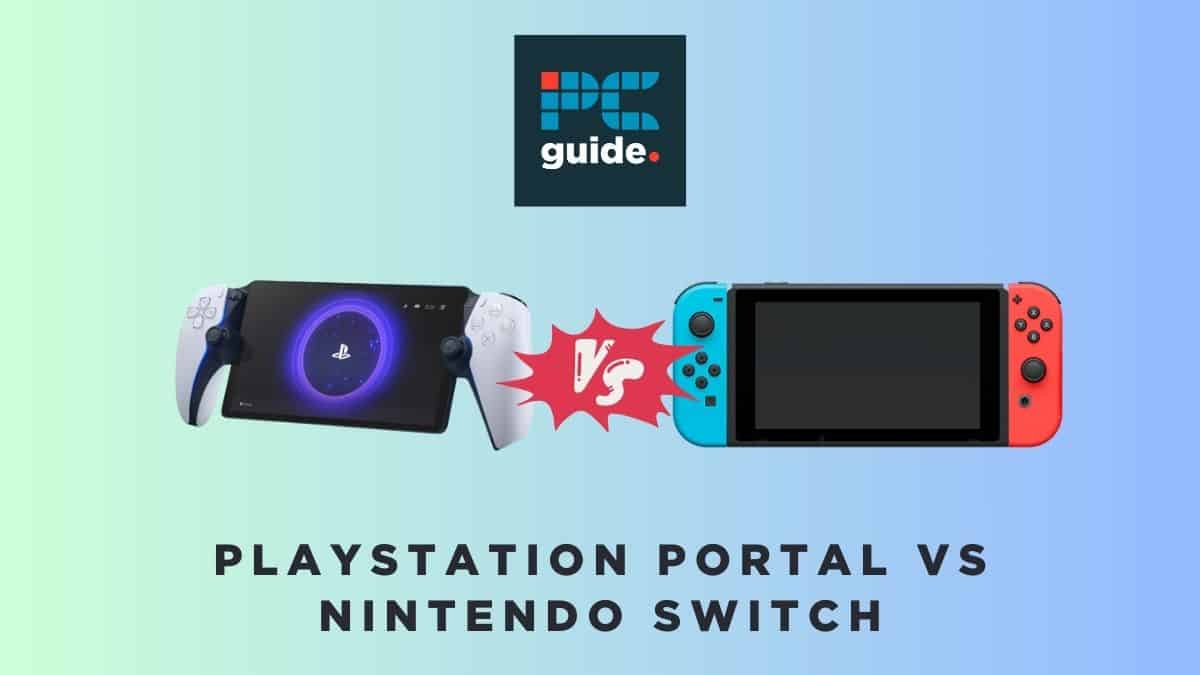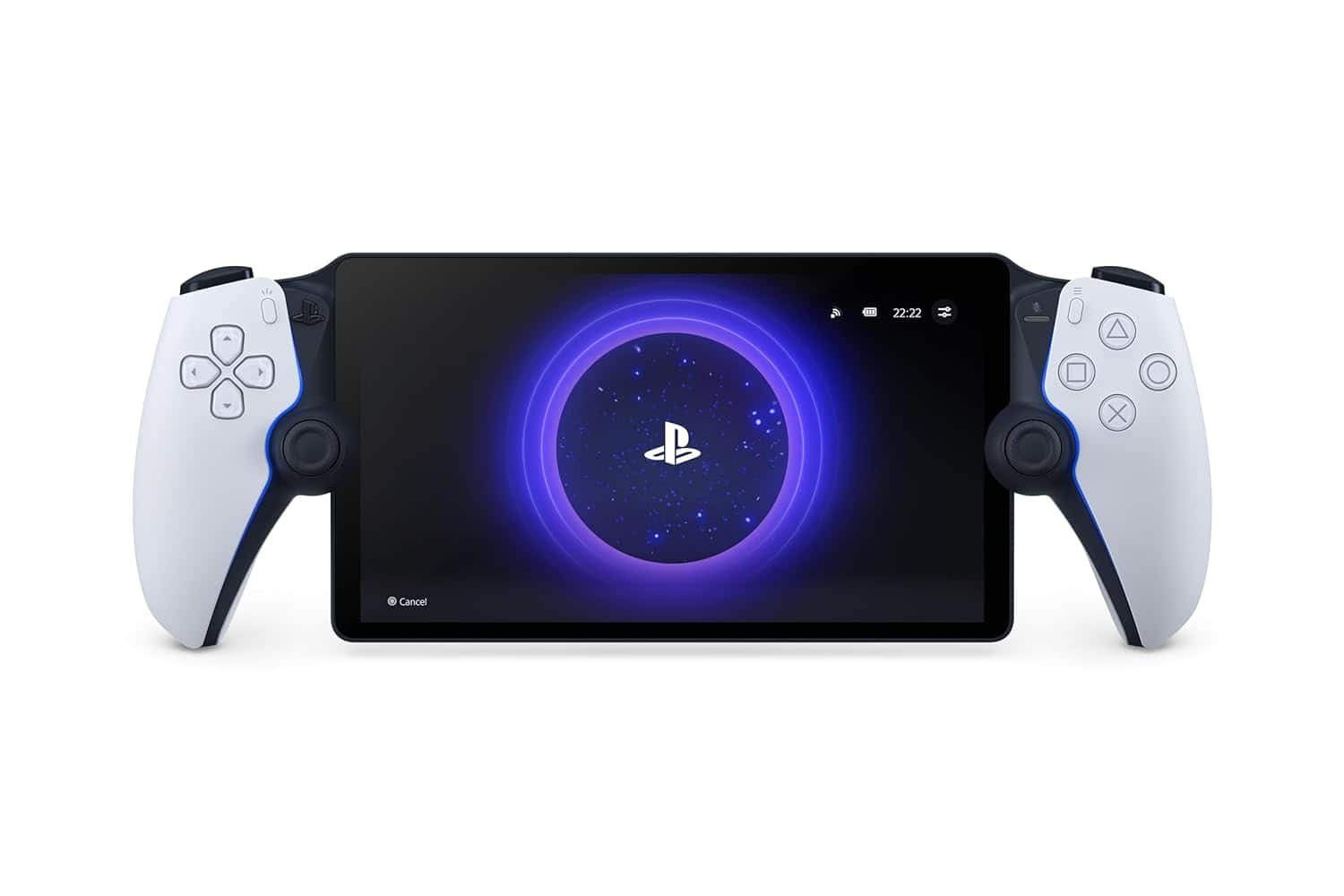PlayStation Portal vs Nintendo Switch – DualSense or Joy-Con?

Table of Contents
The Nintendo Switch pretty much dominates the handheld market, but Sony’s next take on a portable device has recently been launched, so we’re comparing the PlayStation Portal vs Nintendo Switch. These two devices offer players the ability to take their gaming experience on the go, but they do so in very different ways. One has been built for streaming while the other runs games natively, but what else distinguishes each console? In this comprehensive comparison, we will delve into the key differences between Sony’s PlayStation Portal and the Nintendo Switch, including display technology, controllers, functionality, and price. So, let’s dive in!
PlayStation Portal vs Nintendo Switch specs
| Specifications | PlayStation Portal | Nintendo Switch |
|---|---|---|
| Display | 8-inch LCD | 6.2-inch LCD (Switch), 7-inch OLED (Switch OLED) |
| Resolution | 1080p | 720p (Switch, Switch Lite), 720p (Switch OLED) |
| Refresh Rate | 60Hz | 60Hz |
| Controllers | DualSense | Joy-Con |
| Connectivity | Wi-Fi | Wi-Fi |
| Bluetooth | No | Yes |
| Game Compatibility | PS5 games | Nintendo Switch games |
| Cloud Gaming Support | No | Select titles |
| Price | £199.99 / $199.99 / €219.99 | £279.99 / $299.99 / €329.99 (Standard Switch), Price varies for other models |
Prime Day is finally here! Find all the biggest tech and PC deals below.
- Sapphire 11348-03-20G Pulse AMD Radeon™ RX 9070 XT Was $779 Now $739
- AMD Ryzen 7 7800X3D 8-Core, 16-Thread Desktop Processor Was $449 Now $341
- ASUS RTX™ 5060 OC Edition Graphics Card Was $379 Now $339
- LG 77-Inch Class OLED evo AI 4K C5 Series Smart TV Was $3,696 Now $2,796
- Intel® Core™ i7-14700K New Gaming Desktop Was $320.99 Now $274
- Lexar 2TB NM1090 w/HeatSink SSD PCIe Gen5x4 NVMe M.2 Was $281.97 Now $214.98
- Apple Watch Series 10 GPS + Cellular 42mm case Smartwatch Was $499.99 Now $379.99
- ASUS ROG Strix G16 (2025) 16" FHD, RTX 5060 gaming laptop Was $1,499.99 Now $1,274.99
- Apple iPad mini (A17 Pro): Apple Intelligence Was $499.99 Now $379.99
*Prices and savings subject to change. Click through to get the current prices.
PlayStation Portal vs Nintendo Switch features
Here, we will compare the features of the PlayStation Portal vs Nintendo Switch.
Display technology
The PlayStation Portal boasts a large 8-inch LCD screen with a crisp 1080p resolution and a 60Hz refresh rate. This generous screen size provides gamers with a visually immersive experience, allowing them to fully appreciate the graphics of their favorite PlayStation games. Dedicated to Remote Play, the Portal streams your PS5 right into your hands, allowing gamers to launch into AAA titles Spider-Man 2 or Naruto x Boruto Ultimate Ninja Storm Connections in comfort from any room of the house.
On the other hand, the Nintendo Switch comes in a variety of models, including the original Switch, the Switch Lite, and the recently released Switch OLED. The standard Nintendo Switch features a 6.2-inch LCD screen, while the Switch Lite has a slightly smaller 5.5-inch LCD screen. The OLED model, however, matches the PlayStation Portal with a 7-inch OLED screen. Although the OLED technology on the Nintendo Switch offers vibrant colors and improved contrast, the PlayStation Portal’s larger screen size gives it an edge in terms of immersion.
Controllers
The PlayStation Portal features a controller design inspired by the highly acclaimed DualSense controller of the PS5. This controller is seamlessly integrated into the handheld device, with haptic feedback, adaptive triggers, and a light bar. While the DualSense controller on the PlayStation Portal offers a familiar and comfortable gaming experience, it is permanently attached to the screen, limiting the versatility of the device.
In contrast, the Nintendo Switch utilizes the unique Joy-Con controllers. These detachable controllers can be used individually, attached to the sides of the console, or used wirelessly for multiplayer gaming. The Joy-Con controllers also include gyro support and a feature called HD Rumble, which adds a tactile dimension to gameplay. The versatility and adaptability of the Joy-Con controllers give the Nintendo Switch an advantage in terms of multiplayer gaming and diverse play styles, unlike the one-dimensional playstyle of the Portal.
Functionality
The PlayStation Portal is primarily designed for Remote Play, allowing gamers to stream games from their PS5 console over a Wi-Fi connection. In contrast, the Nintendo Switch offers standalone gaming capabilities. With its powerful internal hardware, the Nintendo Switch can play games independently, whether they are downloaded digitally or played via physical game cartridges.
How long will a PlayStation Portal last?
Like any high-end tech, a PlayStation Portal will likely last a good few years, but this question is more about when the novelty of it will wear off. Like many people out there, I’ve owned a Switch since it came out back in 2017, and still reach for it weekly. Its versatile gameplay and classic Nintendo titles have seen it last the test of time. However, the rapidly evolving console scene might just see the PS Portal get quickly usurped by an alternative that can go beyond what it can do and better, without you having to invest in a $500 console.
PlayStation Portal vs Nintendo Switch price
The PlayStation Portal is priced at £199.99 / $199.99 / €219.99, positioning it as a more affordable option compared to the Nintendo Switch. However, it is important to note that the PlayStation Portal requires the additional purchase of a PS5 console, bringing the total cost of owning a PlayStation Portal and a PS5 console to a higher price point than most handheld consoles.
On the other hand, the Nintendo Switch comes in various models with different price ranges. The standard Nintendo Switch is priced at £279.99 / $299.99 / €329.99, offering a higher initial investment compared to the PlayStation Portal. However, the Nintendo Switch does not require the purchase of an additional console, making it a more cost-effective option for gamers who do not already own a PS5.
Is the PlayStation Portal better than the Nintendo Switch?
If you’re a PlayStation enthusiast who already owns a PS5 console, the PlayStation Portal provides an excellent accessory for remote play, allowing you to enjoy your PS5 games on the go. The larger screen size and integration of the DualSense controller offer a premium gaming experience, and for its purpose, the Portal is an excellent device. It’s worth noting that we have compared the Portal to the Backbone One, another controller that is specifically geared towards Remote Play experiences.
On the other hand, the Nintendo Switch offers a versatile gaming experience with its standalone capabilities, detachable Joy-Con controllers, and support for both handheld and docked play. Also, the ability to play games without the need for a constant internet connection makes it a popular choice among gamers of all ages.



